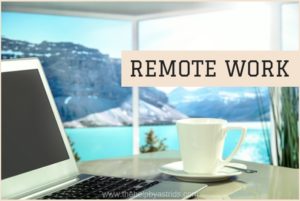 A survey done by Gallup in 2015, reports that 37% of the US labor force is working remotely…and that number is rising. The option to do remote work is one of the perks that is being made available to employees today. It certainly is one of the perks that millennials look for when job hunting. Offices are now equipped to provide a remote work option to their employees. And there are many tools to enable this: powerful laptops, video conferencing software, collaboration tools, instant messaging, and cloud syncing to enable employees to work from anywhere. These are just a few of the tools. But many myths and misconceptions surround this way of working.
A survey done by Gallup in 2015, reports that 37% of the US labor force is working remotely…and that number is rising. The option to do remote work is one of the perks that is being made available to employees today. It certainly is one of the perks that millennials look for when job hunting. Offices are now equipped to provide a remote work option to their employees. And there are many tools to enable this: powerful laptops, video conferencing software, collaboration tools, instant messaging, and cloud syncing to enable employees to work from anywhere. These are just a few of the tools. But many myths and misconceptions surround this way of working.
Why aren’t we all still adopting this way of working when technology has enabled an easier way to do remote work. This is probably due to the stigma surrounding remote work – with remote work meaning you can work from anywhere outside the office setting (co-working spaces, coffee shops, work from home, etc.).
One prevailing myth is that productivity decreases when you work from home. This is because of the three temptations: the fridge, the bed, and the TV. But one study from Harvard Business Review notes that a worker’s productivity increases by 13.5% if he/she is permitted to do remote work. This could be due having fewer distractions like office chatter, white noise, pointless meetings, and the infamous breakroom effect where you get pulled away to socialize, have coffee, or eat cake with co-workers.
Some office traditionalists wonder if remote workers are as committed to their work as workers in an office setting. One question is if they even get out of their pajamas for work. The underlying fear is that if they don’t even bother to get dressed, they can’t care that much. But many remote workers do get dressed – they go through the morning routines of taking a shower, preparing breakfast, and seeing the kids off to school before hunkering down to work. The only difference is that they avoid the long commute/drive through horrible traffic. That is a major win for everyone if you ask me. More remote workers mean fewer vehicles on the street.
And then there’s the myth about poor communication – that somehow remote workers are harder to get a hold of than office workers. This belief can easily be addressed by communication software. Meetings via teleconferencing through Skype, Google Hangouts, Zoom, or other tech is just as or dare I say, even more, effective than face to face office meetings. It eliminates delays because there’s no need for running around to find a meeting room, invitees can join in at any time, and participants can join in from anywhere in the world and at any time zone.
A remote workers workload doesn’t change, they still have to finish the task that they have to attend to even if they’re outside of the office setting. This means they tend to overcompensate by having more structure in place since they more time and more autonomy over their schedules.
Are you a remote worker? How is it working for you so far? Share your experiences with us in the comments. Stay humble, hustle hard.
Written by Jaie O. The Help